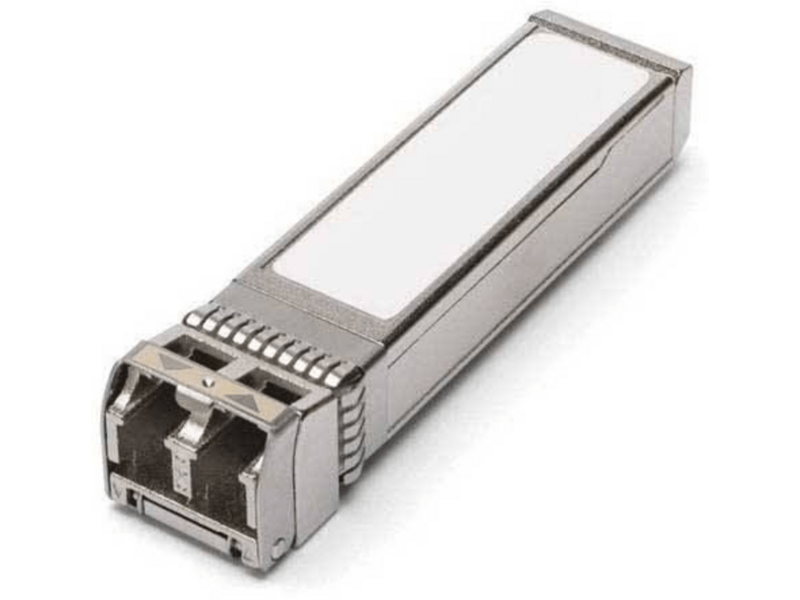What are Optical Transceivers?
Optical transceivers, sometimes called optical transceiver modules, are network interface devices that use fiber optic technology to transmit and receive digital data. They serve as the interfaces that connect network equipment like switches, routers, servers, and storage arrays to fiber optic cabling. At one end, they connect to network equipment via interfaces like SFP, SFP+, QSFP, QSFP28 and at the other end, they connect to fiber optic cables.
Optical Transceivers contain transmitter and receiver components to convert electrical signals to optical signals for transmission and optical signals back to electrical signals for reception. The transmitter contains a laser diode which is used to generate light pulses to represent the binary 1s and 0s being transmitted. On the receiving end, the transceiver contains a photodiode that converts the incoming light pulses back into an electrical signal.
Types of Optical Transceivers
There are several common physical form factors for optical transceivers including:
– SFP (Small Form-factor Pluggable): Small transceivers commonly used in 1Gbps Ethernet and Fibre Channel networks. They have a maximum speed of 1.25Gbps.
– SFP+ (Enhanced Small Form-factor Pluggable): An enhanced version of SFP that supports higher speeds up to 16Gbps.
– QSFP (Quad Small Form-factor Pluggable): A smaller transceiver form factor that supports speeds up to 100Gbps using parallel optics.
– QSFP28: An advanced QSFP transceiver specification that doubles the port density and enables speeds up to 100Gbps.
– CFP (Combined Fibre Channel and Packet Transceiver): A much larger pluggable module used for high-speed applications like 40Gbps and 100Gbps Ethernet and Fibre Channel.
In terms of transmission medium, common types of optical transceivers include:
– Single mode (SM): Used for longer distance, high-speed applications and supports transmission distances up to 10-40km.
– Multimode (MM): Used for shorter distances up to 550m on fiber optic cabling with a wider core. Suited for campus and data center deployments.
Optical Transceivers in Data Centers
Modern data centers have become entirely dependent on high-speed, high-bandwidth fiber optic networking. Optical transceivers play a critical role in enabling connectivity within the data center and between data centers. Some key uses of transceivers in data center environments include:
– Connecting top-of-rack switches to servers: Modern servers commonly use 1Gbps or 10Gbps SFP+ transceivers to connect to top-of-rack switches.
– Interconnecting switches: Core switches and aggregation switches in the data center use transceivers like QSFP28, QSFP+, CFP etc. running at 25Gbps, 40Gbps and 100Gbps speeds to support high bandwidth requirements.
– Connectivity to storage arrays: Fibre Channel and Ethernet storage arrays widely employ SFP, SFP+ and CFP transceivers to provide fast, reliable connectivity to servers.
– Linking data centers: Data centers interconnected over metro or wide area networks usually rely on CFP and CFP2 type transceivers running at 100Gbps to support bandwidth-intensive east-west traffic between sites.
– Rack connectivity: Optical transceivers like SFP and SFP+ allow servers and switches housed in different racks within the same data hall to connect over multimode fiber.
– Data backup and replication: Storage arrays use lower speed SFP/SFP+ transceivers to rapidly move and replicate data between each other or to backup systems for disaster recovery purposes.
Challenges and Standardization
While optical transceivers help achieve the high throughput demanded in modern data networks, they also present some key challenges:
– Standards: Multiple competing standards and form factor specifications like SFP, SFP+, QSFP etc. have created compatibility and interoperability issues.
– Power dissipation: Higher port densities and speeds have increased power requirements which is a constraint in densely packed systems.
– Quality and compliance: Use of non-standard or low-quality transceivers can damage expensive network equipment or lead to outages.
– Pricing: Proprietary transceivers from OEMs are often much more expensive than compatible third-party options challenging budget constraints.
To address these issues, standards bodies like IEEE, OIF and SFF have released specifications to promote pluggable multisource agreements and compatibility. Organizations also focus on interoperability testing, power/thermal compliance and reliability certification programs for transceiver vendors. While standardization efforts have resolved many issues, further work is needed as port speeds continue scaling.
In summary, although often hidden from view, optical transceivers have become the backbone of high-speed data communications. They play a critical yet underappreciated role in enabling cutting-edge applications across data centers, cloud computing and telecommunications networks. Standardization initiatives aim to increase compatibility while technological progress steadily marches towards developing power-efficient, higher-density transceiver solutions for next-generation 400Gbps, 1Tbps and beyond network speeds.

